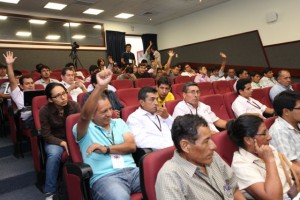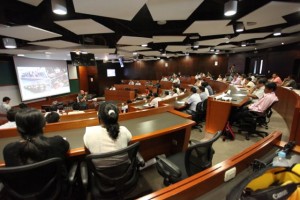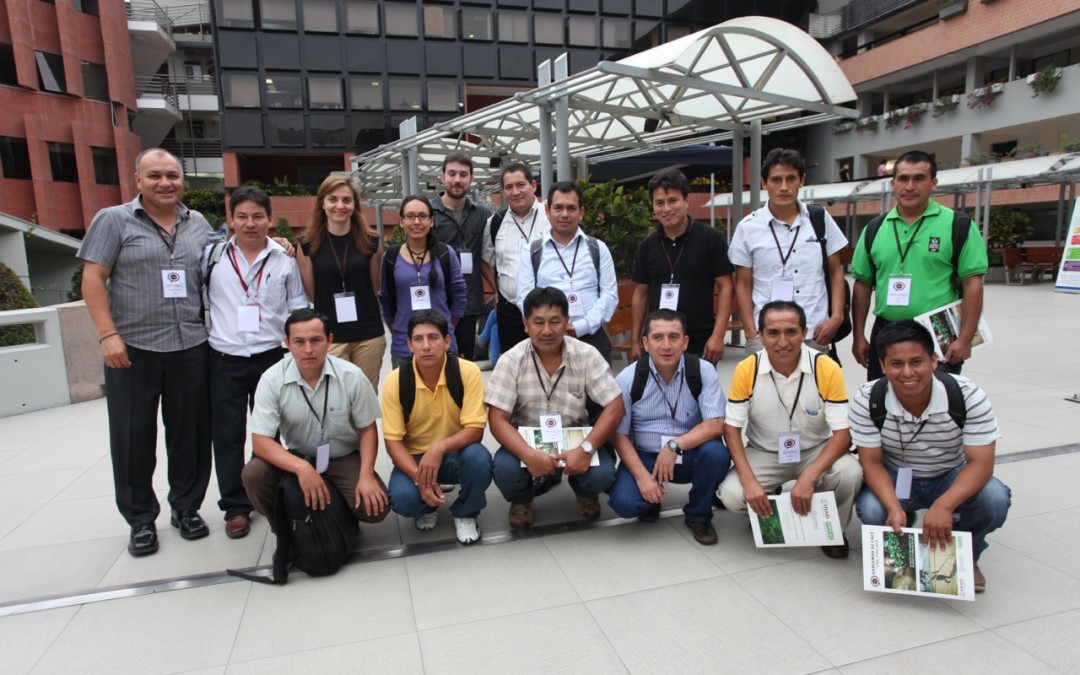I’m happy to report the completion of a very successful final day of Let’s Talk Coffee Peru here in Lima. We hosted more than 150 participants at this year’s event, including leaders from 30 producer organizations across the country. The level of transparency, professionalism, and interconnectedness of the Peruvian speciality coffee community that I saw at this event is a testament to the impact of many years of direct relationships and annual Let’s Talk Coffee gatherings.
The day started with a discussion of the upcoming SCAA Event in Seattle. This year, Peru has the honor of being the SCAA Portrait Country, a chance to showcase the country’s unique coffee and culture. Ben Corey-Moran of Fair Trade USA, Luis Torres of PromPeru (Peru’s national promotional body for exports), and Susan Aleman of Sustainable Harvest gav
e overviews of SCAA plans, and producer organizations gave their input on how to show the specialty coffee world what Peru—which supplies 23 percent of fair trade coffee to the U.S.—has to offer during April’s event.
Next, Sustainable Harvest’s Quality Control Manager, Dane Loraas, got down to the nitty-gritty with a presentation on strategies for packing and shipping coffee—an important but sometimes overlooked step in the maintenance of coffee quality from farm to roaster. Dane shared results from two pilot projects run by Sustainable Harvest’s logistics team. The first tested the cost and efficacy of different types of packaging for protecting coffee, and Dane shared the results and recommendations for the most economical and most efficient ways to protect coffee on the water. The other pilot tested the variation of humidity and temperature levels as containers cross the water. When containers arrive in a wintry New York after being loaded in a balmy Peru, rapid changes in temperature cause an increase in condensation, leading to wet bags of coffee. Dane recommended that producers conduct a thorough inspection of the container for rust, holes, and problems, as well as line the container with corrugated cardboard before it is loaded.

Everyone was happily surprised when Albert Scalla of INTL FCStone was beamed in via Skype to give an overview of the C-market for coffee. INTL FCStone is a firm that specializes in commodity training, and Albert is a familiar face to many of the attendees, who have seen his very informative and succinct explanations of the coffee market at past Let’s Talk Coffees. Albert discussed the causes of the C-market’s recent volatility—including describing Brazil’s drought and a wave of investments in commodities—and recommended that the cooperative representatives protect themselves from market volatility in the coming years by taking advantage of Sustainable Harvest’s risk management tools, such as hedges (futures and options) and workshops. Even though the volatility looks as though it will work in the favor of producers in the coming years, Albert warns that it can still be an enemy if not managed properly.
The rest of the afternoon consisted of an interactive session between Sustainable Harvest’s supply team and all of the representatives of the Peruvian cooperatives they work with. The session is a crucial piece of the Relationship Coffee Model in Peru. Together, the Sustainable Harvest team and the Peruvian suppliers sit down for four hours to discuss important points of harvesting, processing, and shipping. They introduce new protocols and clarify old ones, reinforce lines of communication, and address doubts, concerns, and questions. Everyone has a voice, and the outcome is a unified, empowered supply chain that faces the 2014 harvest season with collaboration and strength, even in the face of market volatility, climate change, plant disease, and more. Everyone left the room ready to take on the upcoming year.
Last—but certainly not least when it comes to Relationship Coffee—everyone headed out into the balmy Lima night so that old and new friends could share a beer. Tomorrow, most will head back to their homes in the coffeelands of Peru (many via long, windy bus rides), but it won’t be long before they are all seeing each other again, representing Peru at the SCAA in April.

